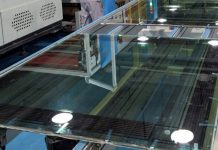
The Australian Government has launched a national workforce plan aimed at ensuring the country’s manufacturing sector remains competitive, sustainable, and future-ready.
Unveiled by Minister for Skills and Training Andrew Giles, the 2025 Workforce Plan – Pathways to Transformation was developed by the Manufacturing Industry Skills Alliance and outlines a strategic framework to modernise training, address skills shortages, and attract new talent to the industry.
The plan identifies five key pillars – Clean Manufacturing, Circular Economy, Advanced Technology, Sovereign Capability, and a Strong and Responsive Skills System – designed to build a resilient and adaptive manufacturing workforce.
According to the Manufacturing Industry Skills Alliance, the plan draws on extensive research, focus groups, interviews, and national surveys to reflect the current and emerging needs of the sector.
“In 2025, manufacturing will contribute more than $100 billion to the Australian economy and employ nearly one million workers across a diverse range of industries,” said Sharon Robertson, CEO of the Manufacturing Industry Skills Alliance.
“Australia’s manufacturing sector is evolving rapidly. This plan – along with the united efforts of Government, Industry, Unions and Training Providers ensures the workforce keeps pace with change and has the skills to drive future growth.”
The workforce plan supports broader national objectives, including the Future Made in Australia agenda, the transition to net zero emissions, and efforts to strengthen sovereign capability in critical sectors such as defence, clean energy, and food production.
Minister Giles said the initiative highlights the importance of coordination between government and industry stakeholders.
“The plan recognises the need for all of us, including governments, employers and unions, to continue to work closely together to ensure the manufacturing industry is best placed to not only meet the challenges we face but also make the most of the opportunities,” he said.
“We know that the manufacturing industry is a great place for apprentices and students to learn new skills, gain a qualification and build a long-term career. This plan will help ensure the industry can grow and adapt to both short- and long-term needs, and continue to be a critical part of Australia’s economy.”
Robertson said the plan’s strength lies in the interconnected nature of its five pillars.
“By taking a ‘big picture’ view, one pillar can leverage another, or provide an insight into why another pillar is facing challenges,” she said.
“Taking this approach will strengthen manufacturing in Australia and lead towards a more comprehensive and resilient industry.”

















